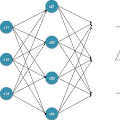The Viterbi algorithm, presented in 1967, allows a maximum likelihood decoding of partial response codes. This study focuses on the duobinary code which is the first member of this family and has been specified for the digital part of television systems recommended by International Organizations. Up to now the error-rate, which is the main criterion of the performance, has been evaluated by simulation. Although there exist theoretical bounds, these bounds are not satisfactory for a channel such as broadcasting (by terrestrial transmitters, cable networks or satellite) which is strongly impaired by noise, and linear and non-linear distortions. Analytical methods, verified by simulation, are presented here in order to evaluate the theoretical and exact values of the error-rate, in the form of series of numerical integrations, for a transmission in baseband or in radio-frequency with quadriphase modulation (or AM/VSB for cable networks) and coherent demodulation, in presence of noise and several distortions. This methodology can be later extended to other partial response codes, to convolutional codes and their concatenations.
翻译:1967年推出的维泰比算法允许最大可能地解码部分响应代码。本研究侧重于作为该家庭第一个成员、被国际组织推荐的电视系统数字部分指定的二恶英代码。到目前为止,对作为性能主要标准的错误率进行了模拟评价。虽然存在理论界限,但这些界限对于广播频道(通过地面发射机、电缆网络或卫星)等受到噪音、线性和非线性扭曲严重影响的频道来说并不令人满意。这里提出经模拟核实的分析方法,以便以数字集成系列的形式评价以基段或无线电频率传送的错误率的理论和准确值,以显示有噪音和若干扭曲的电线性调整(或电缆网络的AM/VSB)和连贯的演示。这一方法后来可以扩展到其他部分反应代码、革命代码及其组合。



